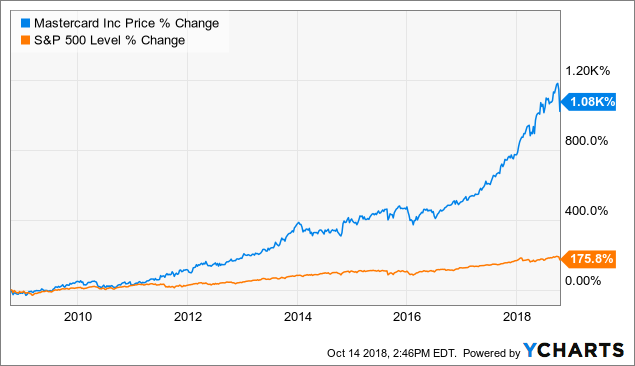Mastercard (NYSE:Â MA) has delivered spectacular returns for investors over the years. The stock has gained over 1,080% in the last decade, far surpassing the S&P 500 index and its cumulative gain of 175.8% in the same period.

MA data by YCharts
Past performance does not guarantee future returns, of course. But high-quality companies with solid competitive strengths tend to keep on winning over time, and Mastercard has what it takes to continue producing outstanding performance in the years ahead.
A High-Quality Business
Second only to Visa (NYSE:Â V), MasterCard is one of the most powerful and globally recognized brands in the payments industry, a business in which brand recognition and trust are key strategic advantages.
The network effect creates a virtuous cycle of sustained growth and increasing competitive strength for MasterCard. In a nutshell, the network effect means that the value of the service increases as it gains more users over time. The telephone and the internet are textbook examples, and the payments industry works under the same dynamic.
Merchants need to accept the debit and credit cards that can bring more customers to the stores, and customers want to have a card that is accepted everywhere. This means customers and merchants attract each other to the main card networks, and this makes the network more valuable over time.
MasterCard is not only getting bigger when it grows in size but is also getting stronger from a competitive point of view, while also creating more value for customers and merchants. The payments industry still offers massive opportunities for growth in the years ahead. Visa calculates that replacing cash and checks with cards is worth nearly $17 trillion in annual spending around the world.
Financial performance over the long term has been truly exceptional. Back in the year 2008, Mastercard was producing $4.99 billion in revenue and $240 million in free cash flow. Fast forward ten years and the business is generating $13.96 billion in sales and $5.52 billion in free cash flow on a trailing twelve-month basis.

